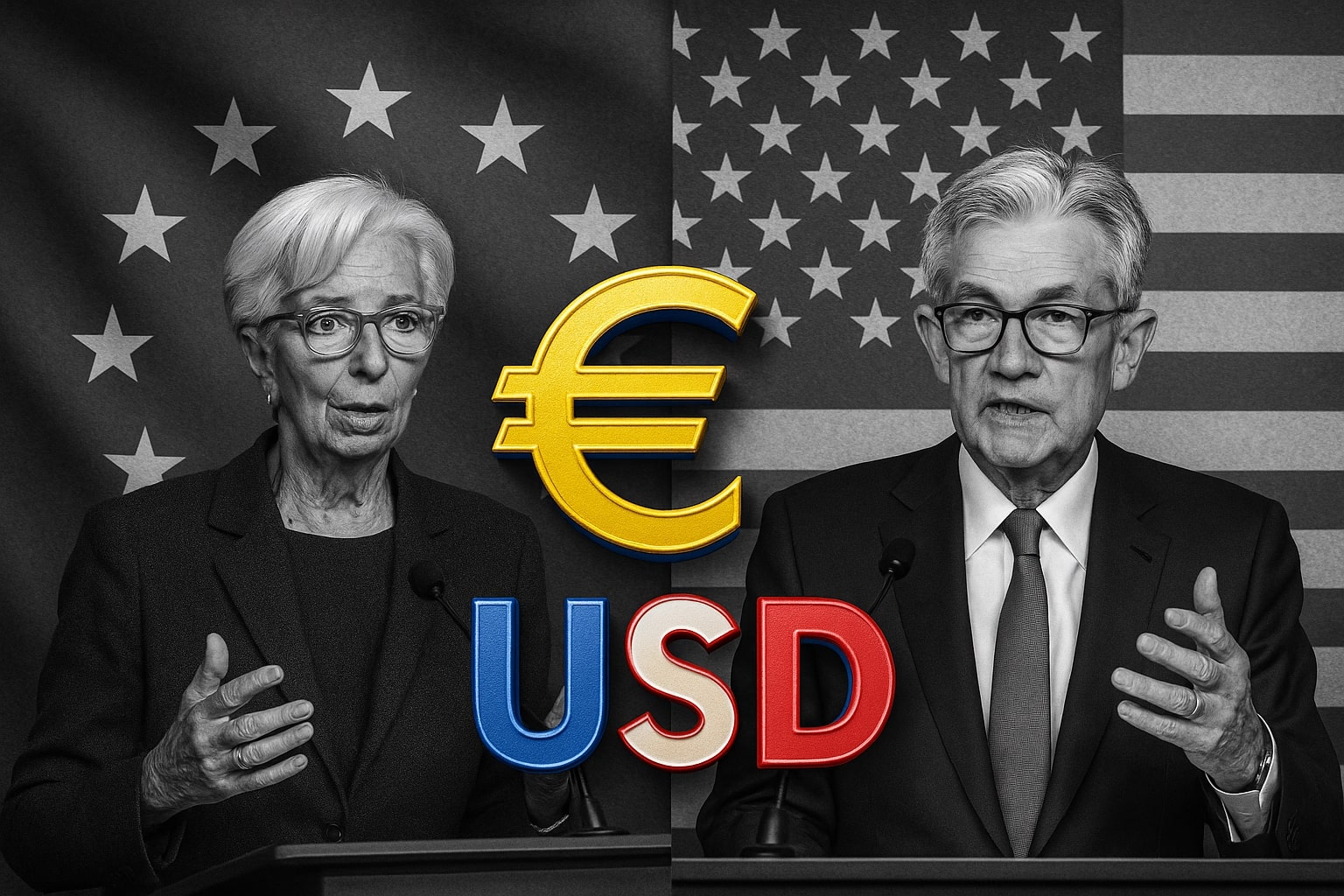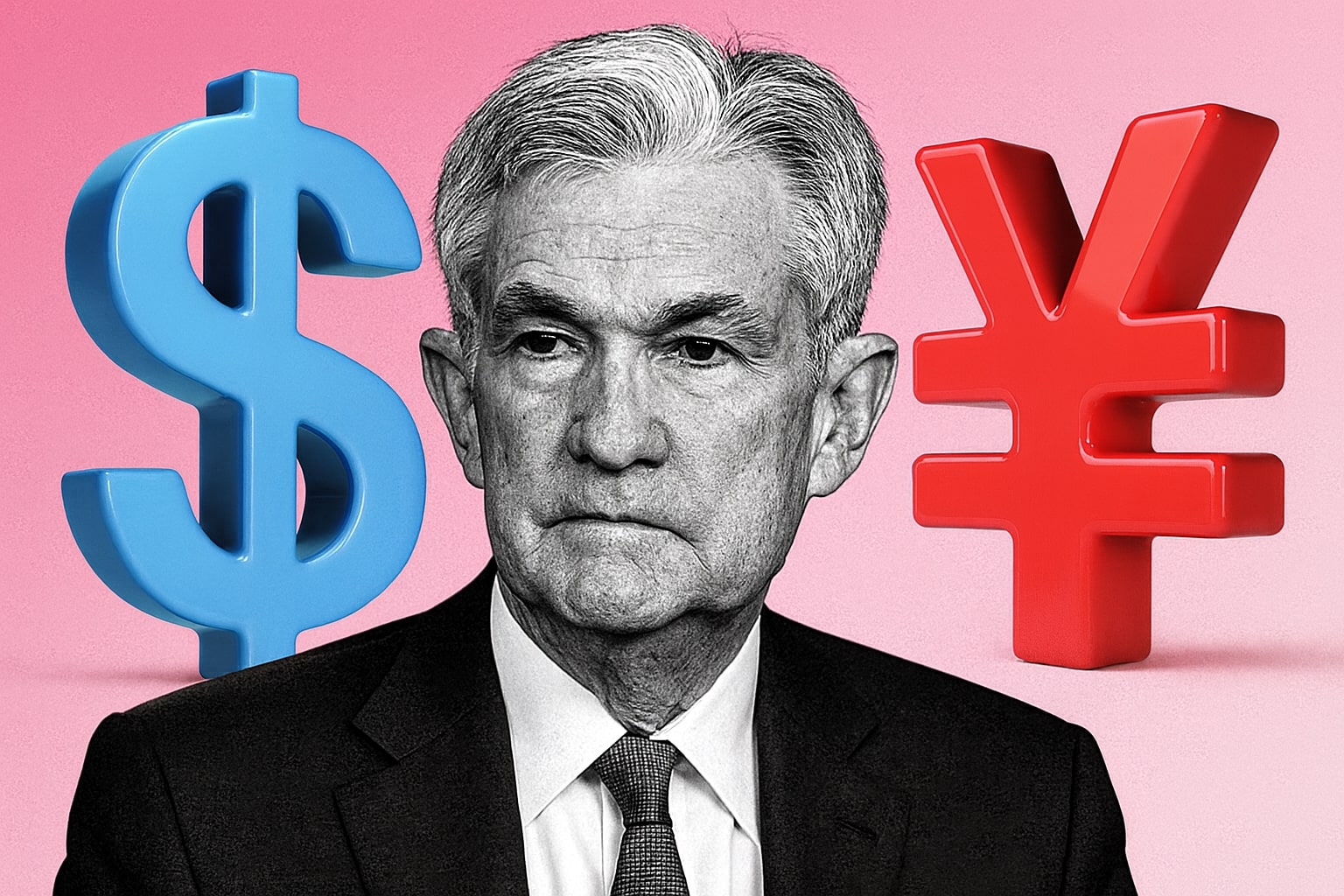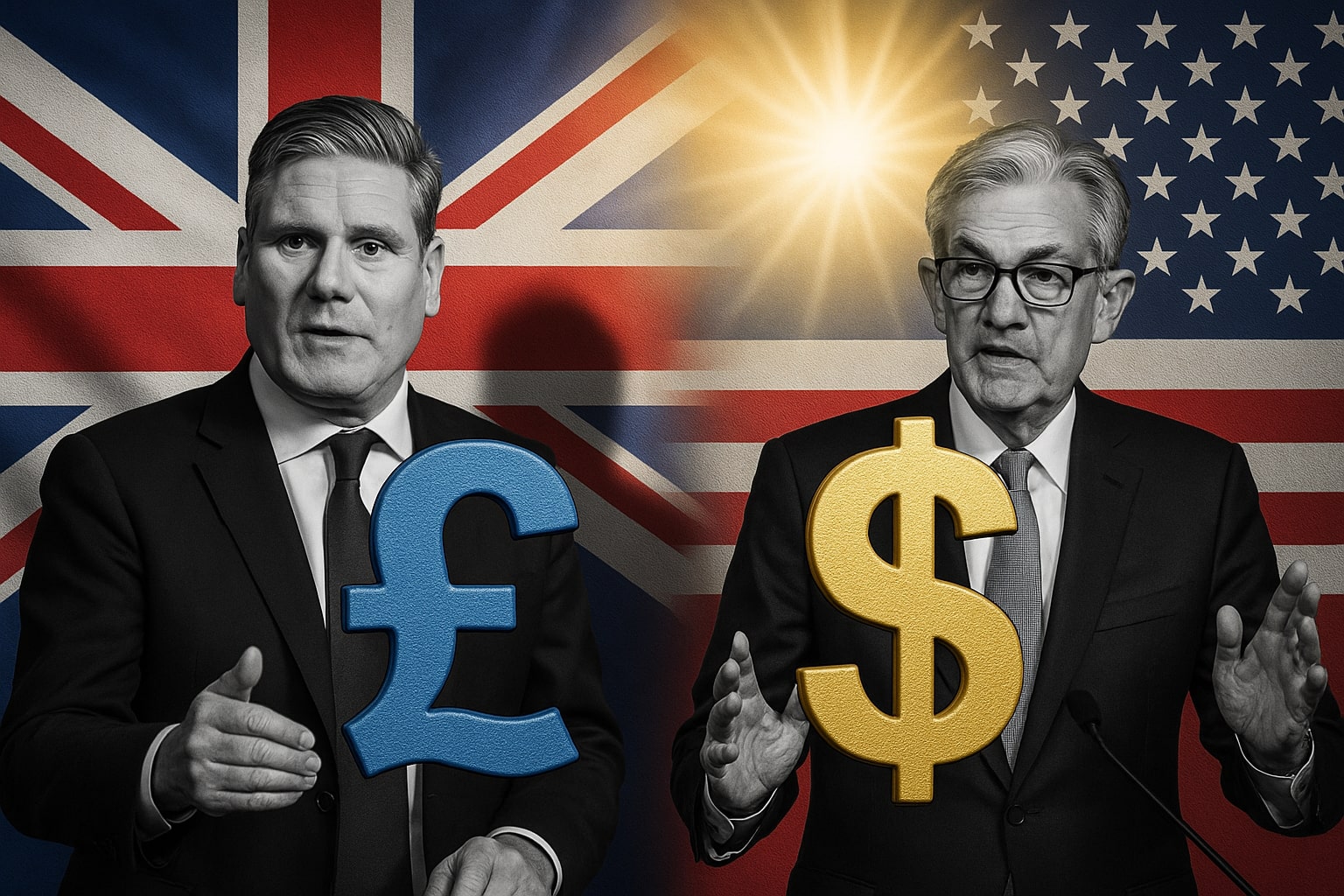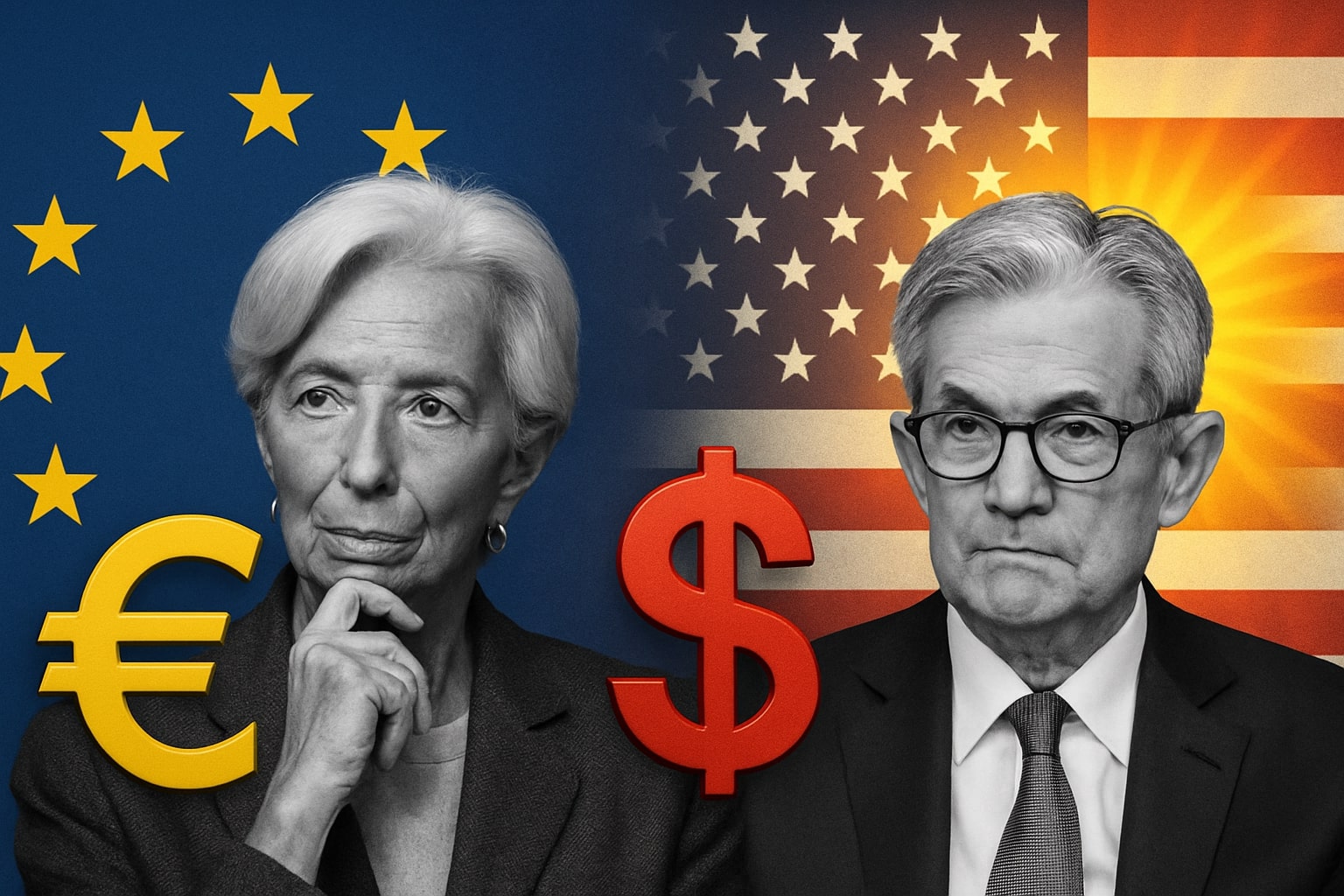
EUR/USD Price Forecast - Euro to Dollar Hovers at 1.1540 as Fed Cut Bets Rise
The euro steadies near 1.1540 after bouncing from 1.1490, buoyed by dovish Fed comments and a weaker U.S. dollar | That's TradingNEWS
EUR/USD Rebounds Toward 1.1550 as Fed Dovish Signals Clash With Weak Eurozone Data
The EUR/USD pair is trading near 1.1540, gaining momentum after rebounding from 1.1490 on Friday. The recovery followed a volatile week dominated by risk repricing in global assets and renewed optimism that the Federal Reserve could deliver a 25-basis-point rate cut in December. The probability of such a move has risen to 69%, up from 44% a week earlier, as U.S. yields softened and the Dollar Index (DXY) pulled back to 100.15 from last week’s highs. The catalyst came from dovish comments by New York Fed President John Williams, who said policymakers have “room to adjust” monetary policy in the near term without jeopardizing the inflation target. His remarks reversed part of the prior week’s dollar strength triggered by tighter rhetoric from officials like Boston Fed President Susan Collins and Dallas Fed President Lorie Logan, both of whom cautioned against premature easing.
U.S. Data Strengthens Fed Cut Bets but Mixed Signals Keep Dollar Defensive
Despite a more optimistic tone on policy, U.S. macro data remains uneven. The University of Michigan Consumer Sentiment Index improved to 51 in November from 50.3, while inflation expectations for one year ahead eased to 4.5% from 4.7%. The five-year outlook also slipped to 3.4%, indicating mild disinflationary sentiment. Meanwhile, the S&P Global Services PMI rose to 55.0, surpassing expectations of 54.8, whereas the Manufacturing PMI slowed to 51.9 from 52.5. These releases show the U.S. economy holding above recessionary thresholds but decelerating enough to justify policy flexibility. The combination has capped dollar gains and given the euro space to stabilize above the 1.15 threshold.
Eurozone Weakness Persists: German IFO, PMI Data Reinforce Growth Concerns
The euro’s recovery has occurred despite weak European fundamentals. The German IFO Business Climate Index fell to 88.1 in November from 88.4, missing consensus forecasts of 88.5. Economic expectations deteriorated to 90.6, down from 91.6, signaling continued pessimism among firms. The Eurozone HCOB Manufacturing PMI dropped to 49.7 from 50.0, missing the expected improvement to 50.2, confirming renewed contraction in the industrial sector. The Services PMI edged slightly higher to 53.1 from 53.0, but the Composite Index eased to 52.4, underscoring slow expansion. In Germany, manufacturing activity contracted to 48.4, while services cooled sharply to 52.7 from 54.6, far below the forecast of 53.9. These readings underline that the Eurozone’s largest economy remains fragile despite mild stabilization in southern Europe.
ECB Policy Stability Offers Limited Cushion for the Euro
The European Central Bank (ECB) continues to signal policy patience rather than pivoting toward cuts. President Christine Lagarde emphasized vigilance against inflation and confirmed that no rate changes are expected before late 2025. ECB members remain aligned in maintaining the deposit rate at 4%, contrasting sharply with the Fed’s potential easing bias. This divergence has narrowed rate differentials temporarily in favor of the euro, allowing EUR/USD to defend its 1.147–1.150 support area. However, the single currency’s resilience is largely reactive to U.S. weakness rather than evidence of Eurozone strength.
Technical Analysis: EUR/USD Rebounds from Support but Faces Heavy Resistance at 1.1550
From a technical perspective, EUR/USD remains under short-term bearish pressure despite recent stabilization. The pair trades below both the 20-day and 50-day exponential moving averages (1.1553 and 1.1600), confirming a capped structure. A sustained break above 1.1539 is required to neutralize the downside bias. The Relative Strength Index (RSI) has recovered from oversold levels but remains below 40, implying the rally lacks conviction. On the four-hour chart, momentum indicators show a corrective bounce rather than a trend reversal. Key resistance zones cluster between 1.1539 and 1.1600, with the next pivot at 1.1625, where the descending channel from October converges. Failure to break above these barriers would likely result in renewed selling pressure toward 1.1490, then 1.1468, and possibly 1.1425 if U.S. data surprise hawkishly.
Dollar Weakness Fueled by Dovish Fed Commentary and Market Liquidity
The U.S. Dollar Index (DXY), now trading around 100.14, has retreated from last week’s five-day rally. While the overall trend remains constructive above 99.70, momentum is fading. The RSI on the daily chart has cooled from 65 to 58, and buyers are struggling to push beyond the 100.34 resistance band. As liquidity thins toward month-end and U.S. Treasury yields stabilize near 4.05%, traders are scaling back long-dollar exposure ahead of Tuesday’s PPI report. A softer print could accelerate the dollar’s decline, lifting EUR/USD further into mid-range resistance zones.
Euro Sentiment Lifted by Risk Appetite and Ukraine Peace Prospects
Risk sentiment across European equity markets improved on Monday, supported by headlines hinting at renewed Ukraine peace negotiations and stabilizing global growth expectations. The DAX and CAC 40 both rose by over 1.2%, prompting risk-on flows into the euro. However, analysts warn that this rebound is fragile given the Eurozone’s poor manufacturing outlook and weak consumer demand. The EUR/USD correlation with equities has strengthened recently, with a 0.71 positive coefficient, indicating that risk appetite rather than rate differentials has driven the pair’s near-term recovery.
Volatility Returns Ahead of Critical U.S. PPI and Retail Data
All eyes now turn to Tuesday’s U.S. Producer Price Index and Retail Sales reports. Consensus expects headline PPI to rise 0.3% month-on-month and retail sales to expand 0.4%. Any deviation could trigger sharp moves in EUR/USD, especially given the market’s crowded short positioning. A hot inflation print could revive dollar demand and push the pair back below 1.15, while softer data would strengthen bets for a December cut, potentially driving the pair toward 1.1600. Options markets show one-week implied volatility at 7.8%, up from 6.4% last week, reflecting elevated hedging demand into data risk.
Market Structure and Positioning: Bears Losing Momentum, But No Confirmation of a Bull Turn
Speculative traders remain net short the euro, with CFTC data showing –78,000 contracts as of last Tuesday. However, short-covering activity has picked up as the dollar rally stalls. Spot price behavior near 1.1500 shows long-wick candles, suggesting dip-buying interest around that zone. This dynamic mirrors prior cyclical troughs, yet sustained recovery will require a decisive reclaim of 1.156–1.160 to trigger trend-following inflows. Until that occurs, EUR/USD remains technically trapped within a corrective band, with risk skewed to the downside in case the Fed narrative shifts again.
Read More
-
SCHD ETF Price at $27: Can SCHD’s 4% Yield and 9.15% Dividend Growth Beat High-Yield Covered Call ETFs?
15.12.2025 · TradingNEWS ArchiveStocks
-
XRP ETFs Close on $1B Inflows as XRPI at $10.92 and XRPR at $15.52 Hit 52-Week Lows
15.12.2025 · TradingNEWS ArchiveCrypto
-
Natural Gas Price Forecast: NG=F Holds the $4 Floor as Oversupply Clashes with 2026 LNG Demand
15.12.2025 · TradingNEWS ArchiveCommodities
-
USD/JPY Price Forecast - Dollar to Yen At 155: Yen Strength Builds As BoJ Hike And NFP Collide
15.12.2025 · TradingNEWS ArchiveForex
Macro Interplay: Eurozone Fragility vs. U.S. Policy Easing Probability
The current EUR/USD trajectory reflects two opposing forces: U.S. disinflation encouraging dovish pricing and Eurozone stagnation preventing meaningful follow-through. The U.S. retains growth traction, with real GDP still expanding near 2.1%, while the Eurozone barely avoids recession with 0.2% quarterly growth. This disparity caps euro upside beyond 1.16 even under a softer dollar regime. Meanwhile, the ECB’s cautious communication ensures no premature loosening, which limits volatility but also restrains appreciation potential.
Verdict — EUR/USD: Neutral to Bullish Bias Short-Term, Structural Bearish Medium-Term
Considering current market dynamics, EUR/USD holds a neutral-to-bullish short-term bias while maintaining a bearish medium-term structure. The pair’s ability to defend 1.147–1.150 is key; losing that floor reopens 1.142–1.138. Conversely, a breakout above 1.156–1.160 would activate a rally toward 1.166 and potentially 1.172 if the Fed confirms a December cut. Macro fundamentals still favor the dollar over time, but sentiment-driven rallies could persist into year-end. Based on all available data, the tactical stance is Hold near current levels, Buy on dips toward 1.148, and Sell above 1.160 unless the Fed’s tone turns decisively dovish. The broader bias remains that EUR/USD is entering a correction phase within a long-term downtrend — a reprieve, not a reversal



















